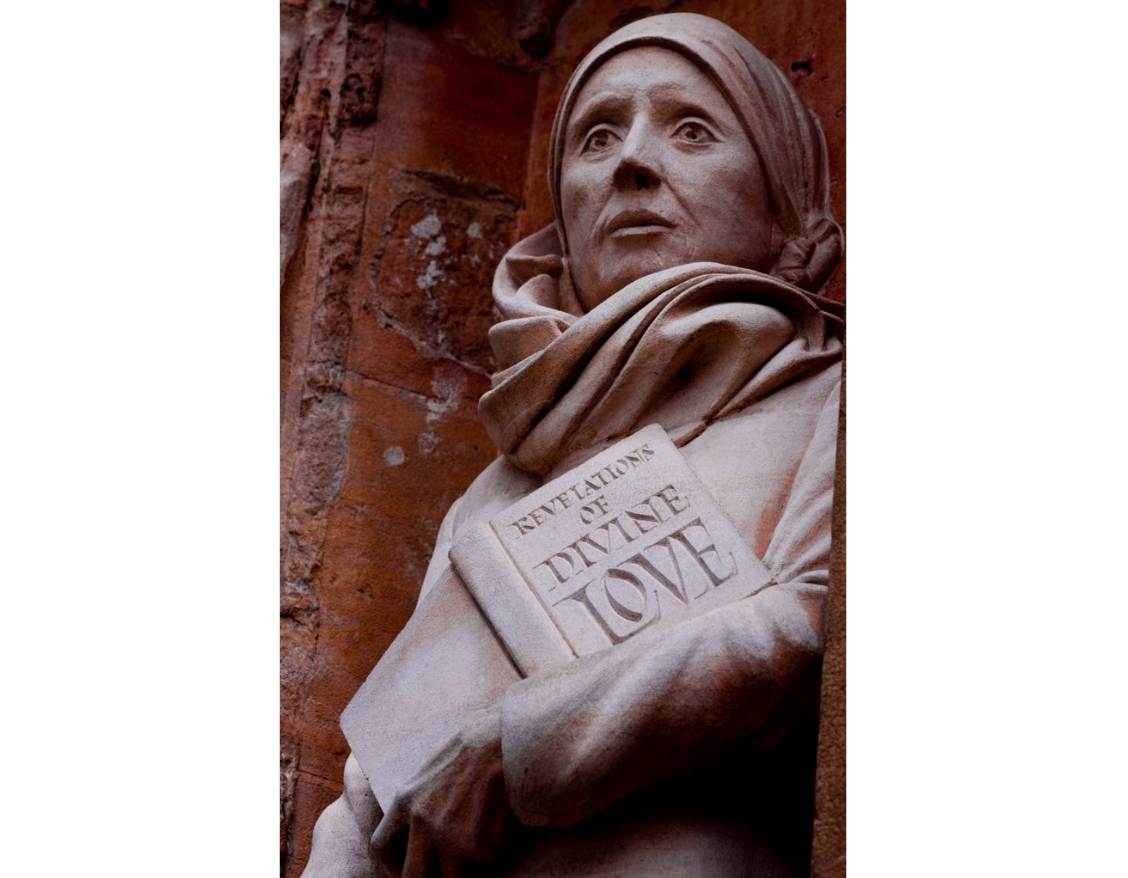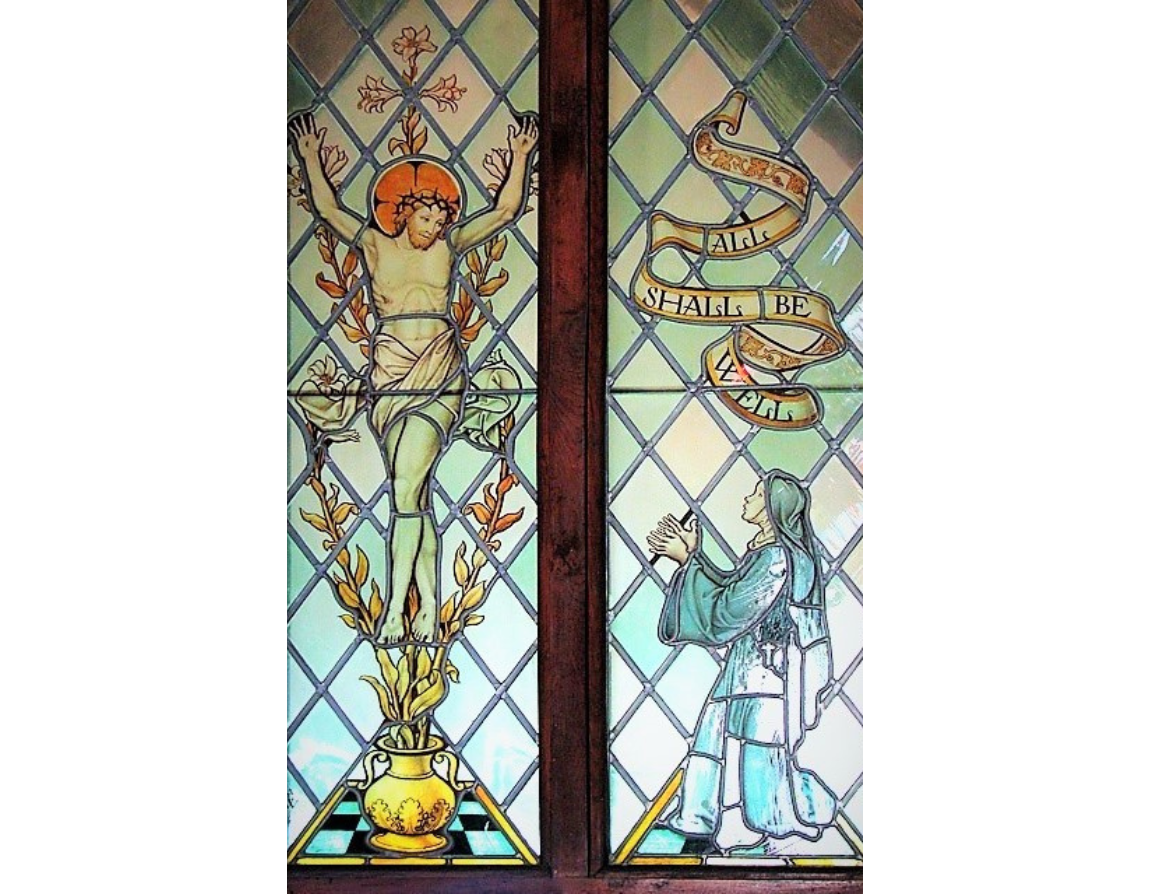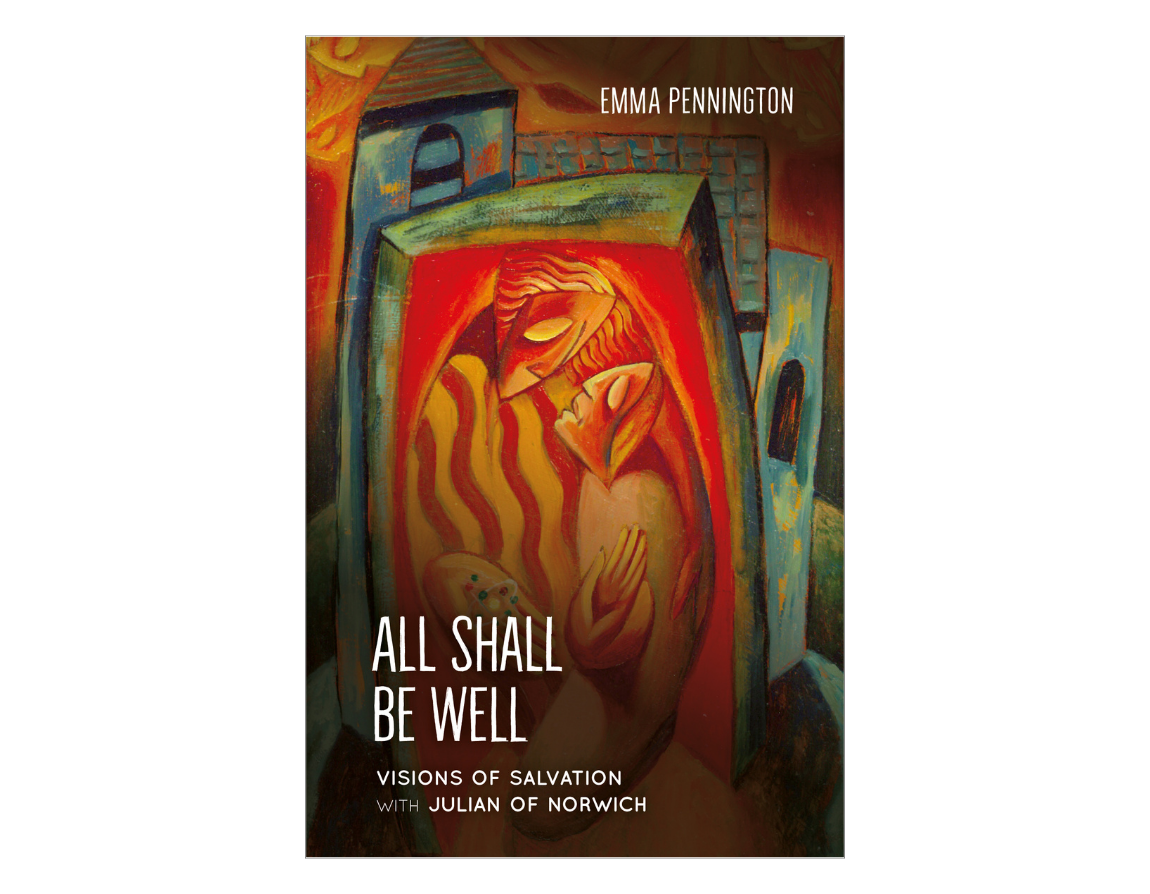Emma Pennington’s new book, All Shall Be Well, explores the teachings of Julian of Norwich, uncovers the true meaning of those comforting words ‘All shall be well’, and highlights the contemporary relevance of revelations received by the anchoress on her deathbed in May 1373. The following extract is from chapter 1.
23 February 2025
Daughter of the church
Julian lived through a time of great uncertainty, when the Black Death was raging through her world and there was civil unrest at home and wars abroad. It was also a time of dis-ease within the church, with church authority being questioned and practice reassessed.

Julian lived through a time of great uncertainty, with church authority being questioned and practice reassessed.
Photo: St Julian’s Church, Norwich, UK © Amitchell125 licensed under CC BY-SA 4.0, cropped
Church criticism
Throughout the history of the temporal body of Christ, the church, there have been those who questioned and dissented against the authority of the church at the time. Even the early church invariably worked out what it believed through fierce debates and controversies. The church of the 14th century was not immune to such crises. We often think of the Reformation of the 16th century as the great turning point between the medieval and early modern world of the church, but it had its beginning in the 14th century. For at that time there was dis-ease about church power, the intermediary role of clergy and sacraments, the interpretive control and exclusivity of scripture, and the degradation of church structures and morals. Such concerns were beautifully expressed by William Langland’s personification of ‘holy church’ in his poem ‘Piers Plowman’.
Like Langland, Julian expresses a similar concern that the mechanisms to handle sin, namely confession and penance, are unable to alleviate a sense of sinfulness and give assurance of forgiveness. Julian also gently, if courageously, challenges the attitude towards the teaching role of women in the church:
Even though I am a woman, ought I therefore believe that I should not tell you of the goodness of God, since I saw that at the same time that it is his will that it be known.
Such internal questioning and criticism by people like Julian and Langland escalated in the 1380s and culminated in the Lollard movement.

Julian gently, if courageously, challenges the attitude towards the teaching role of women in the church.
Photo: Statue of Julian of Norwich, Norwich Cathedral, by David Holgate FSDC © rocketjohn licensed under CC BY-SA 2.0
Religious unrest and heresy
An important figure in this religious dissent, if not the initiator, was the Oxford scholar John Wycliffe, who openly preached against the corruption of the church and wrote numerous tracts and books dismissing the key doctrines of the church in his day. He was also seminal in translating the Bible into English for the first time. At the Council of Blackfriars in 1383 a number of his propositions were denounced as heretical and condemned, but such was the church’s ability to contain such alternative radical thinking that Wycliffe was neither excommunicated nor denied his living, as many were in sympathy with his criticism of the church, not least the king.
It was only later, in 1415 at the Council of Constance, that Wycliffe was declared a heretic and his writings banned. This was part of a clampdown by church authorities who, as a response to the unrest, tightened up their teachings on the authority of the church, including the role of women in teaching. Anyone who was seen to have Lollard sympathies was rooted out and some even ended up by being burnt at the stake. Julian seems to be making an oblique reference to these religious troubles of her day when she writes:
Holy church shall be shaken in sorrow and anguish and tribulation in this world as men shake a cloth in the wind.
In this atmosphere of dis-ease, devotional figures like Margery Kemp came under suspicion. She was brought before the church authorities for following so-called Lollard tendencies numerous times but was never convicted. Her book is often seen as a justification and validation of her unconventional devotional life, which during those nervous years of the late 14th and early 15th centuries could easily be seen as flouting church teaching.
In this context Julian’s statements of orthodoxy have been interpreted as mere posturing to enable her to escape accusations of heresy. This could easily be said of Julian’s text if she did not seem to be so concerned with the seeming incongruity of certain aspects of her revelation with the teaching of ‘holy church’ herself, in particular the words of Christ in her thirteenth showing that ‘all shall be well’.

Julian was concerned with the seeming incongruity of certain aspects of her revelation with the teaching of ‘holy church’.
Photo: The entrance to Mother Julian’s cell, St. Julian’s Church, Norwich © echinkle22 licensed under CC BY-SA 4.0
Re-envisioning church teaching
Julian’s answer to this incongruity is on one level to ‘hold steadfastly to the faith as I had previously understood and at the same time that I should believe that all things shall be well, as our Lord revealed at that time’ – in a sense, to hold the two truths in tension until the great deed of the Lord at the end time.
On another level, however, Julian also seeks throughout her text to re-envision her understanding of church teaching as a consequence of her revelation, thereby allowing the light of the showing to inform her beliefs in the church. A good example of this can be seen in her teaching on prayer.
In chapter 6 of the long version of Revelations of Divine Love, Julian re-envisions her understanding of the many liturgical feasts which had become commonplace by the end of the 14th century. This section directly follows Julian’s spontaneous prayer, which closes chapter 5 and arises from her vision of the littleness of creation and our need to be noughted to know that God is all we need:
God, of your goodness give me yourself, for you are enough for me and I may ask for nothing that is less, that will be full worship of you. And if I ask anything less, then I am always in want, but only in thee do I have all.
It is an ecstatic response to her revelatory encounter, and her text leads us up to this moment, whereupon reading her words we break forth into prayer and they become our words too.
The spontaneous moment of prayer ends, and, in the aftermath, Julian contemplates ‘the custom of our prayers’ – the ways in which, during her day, prayer has become mediated through many different feasts and devotions, praying through Christ’s attributes or saints rather than praying directly to God:
We pray to God for his holy flesh and his precious blood, his holy passion, his dear worthy death and wounds and all the blessed kindness, the eternal life, and we receive all this because of his goodness; and we pray to him by the love of his sweet mother who bore him and all the help we have from her is because of his goodness; and we pray by the holy cross that he died on, and all the virtue and the help we have from the cross, it is because of his goodness.

‘God, of your goodness give me yourself, for you are enough for me.’
Photo: St Julian’s church in Norwich – modern stained glass © Evelyn Simak licensed under CC BY-SA 2.0
A deeper understanding
Unlike the Lollards, who were deeply against praying to the saints or honouring images and feasts for the different aspects of Christ’s passion, Julian does not so much criticise these means of prayer, but she reminds us of why they have been ordained. The means are not an end in themselves; they are only given so that we may seek, understand and know the goodness of God. In this statement there is an implicit adaptation of how feasts, images and intermediary devotional methods are to be used.
Her revelation has reminded Julian of why God has given them to the church. They are to be conduits of grace and goodness not to be loved in themselves, for that would be idolatry. In this way Julian’s revelation does not so much alter the teachings of ‘holy church’ as bring a deeper understanding and spiritual awareness that they already contained. Instead, she re-envisions the practice so that it reflects once more the real teaching that has become hidden and in turn reveals the importance of her revelation, which enables the church to see its purpose and teaching once more from the perspective of God’s love and goodness.


